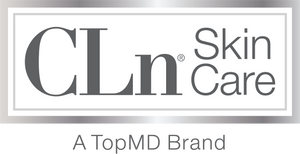
It’s no secret that regular workouts are critical to good mental and physical health, but if you’re not taking proper measures to protect your skin post-workout, then your workouts could actually be compromising your health.
Common Exercise-Induced Skin Infections
Many of you are probably already aware that breaking a sweat can exacerbate acne, and that’s often enough for folks to step up their skincare game. But beyond acne, regular exercise can also cause a wide range of skin infections that significantly impact your health and comfort.
Included among those infections are:
MRSA Skin Infections
MRSA, which stands for Methicillin-resistant Staphylococcus aureus, is a type of staph that can cause a serious skin infection. MRSA skin infections are notoriously difficult to treat because this bacteria can be resistant to a number of common antibiotics. Symptoms of MRSA skin infections include redness, irritation and painful skin ulceration, and skin that’s warm to the touch. Fever and spread of the infection are signs that the infection is worsening and immediate medical attention is needed. Furthermore, the infection can lead to abscess formation that requires surgical draining.
Because MRSA is easily spread via abrasions and skin-to-skin contact, athletes are at a particularly high risk of contracting the infection. In fact, according to research at Vanderbilt University, 29% of contact sport athletes carry MRSA and 23% of non-contact sport athletes carry it.
Folliculitis
Have you ever had razor bumps? Then you’re already familiar with folliculitis. Put simply, folliculitis is an infection of your hair follicles that commonly results from bacteria entering the skin via any number of skin abrasions. That said, any activity that increases friction on your skin, such as a workout, makes you much more susceptible to this infection.
Eczema
Eczema is a type of skin inflammation that can occur on any part of the body and typically results in red, dry, and highly uncomfortable and itchy skin. While this is a chronic condition for some, various lifestyle measures can be taken to minimize its symptoms, such as reducing daily stress levels and proper skin hygiene. Eczema sufferers are particularly prone to Staph skin infections and actually eczema symptoms are worsened by Staph bacteria. Therefore, proper cleansing and precautions are a must during daily life and after a workout.
Acne, MRSA, folliculitis, and eczema aren’t the only skin infections that can arise from exercise but they’re among the most prevalent.
Of course, this begs the question: What do you do about it?
How to Protect Your Skin After a Workout
The good news is, you don’t have to stop working out to combat these exercise-induced infections; you just have to take a few simple measures that’ll significantly reduce your risks.
Cleanse Within One Hour
The number one way to protect your skin after a workout is through proper cleansing. That means cleansing with a high-quality skin cleanser within one hour after your workout. This hour timeframe is important because it’s within this window that bacteria is easily sloughed off; wait any longer and the bacteria bind too strongly to your skin to be easily removed.
Wear Proper Attire
If you can, avoid tight-fitting clothes during your workout as they increase the amount of friction on your skin, thereby increasing your risk of acquiring small abrasions that let in bacteria. If your workout requires tight clothes, then be sure to opt for breathable fabrics that wick away sweat to ensure your skin stays as comfortable and dry as possible.
Tie Your Hair Back
Wet, sweaty hair can rub against your skin while exercising, making it more prone to infections. To avoid this issue, simply tie it back. Additionally, you should also avoid touching your hair when you’re working out because you might transfer bacteria from your sweaty hair to your skin.
More Good Habits
Since microbes are all around us and more so during exercise, we need to be diligent and follow some basic practices:
Allow skin to dry after exercise
Remove wet clothing
Allow feet to dry; wear flip flops to allow feet to dry
Do not share towels or razors
The post How to Protect Your Skin After a Workout appeared first on CLn® Skin Care Blog.
Disclaimer: Unless otherwise explicitly stated, the content on this blog, including all articles, videos, and other information, is for
general informational purposes only and is not intended to be a substitute for professional medical advice,
diagnosis, or treatment. Always seek the advice of your physician or another qualified health provider with any
questions you may have regarding a medical condition or treatment and before undertaking a new health care regimen.
Never disregard professional medical advice or delay in seeking it because of something you have read on this website.
The views expressed on this blog and website have no relation to those of any academic, hospital, health practice,
or other institution.
